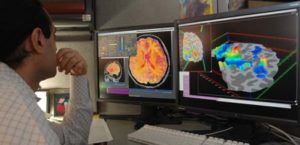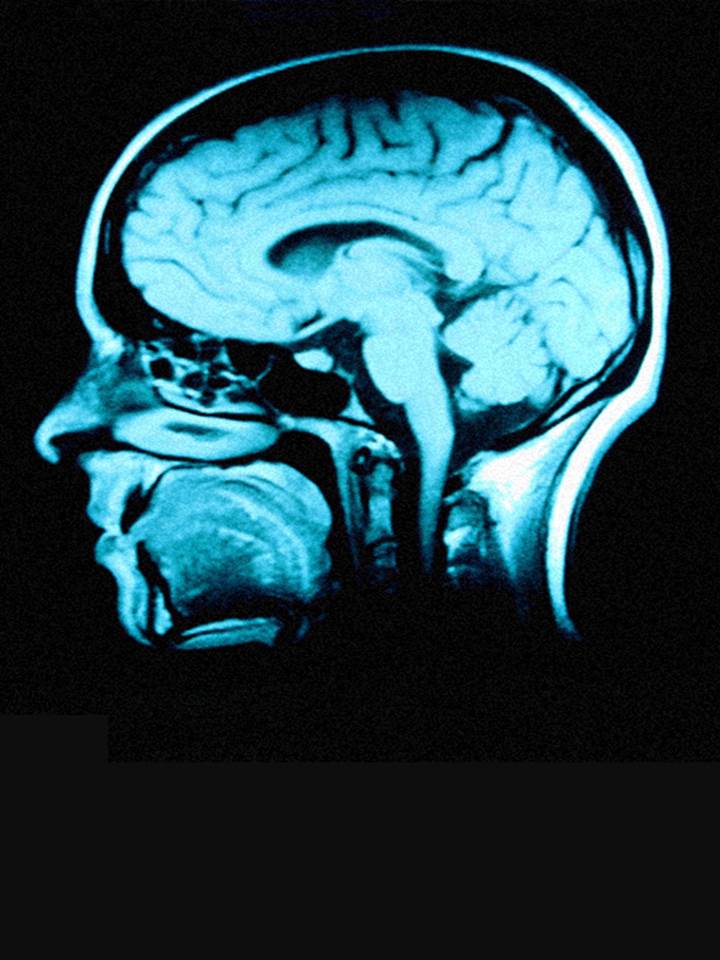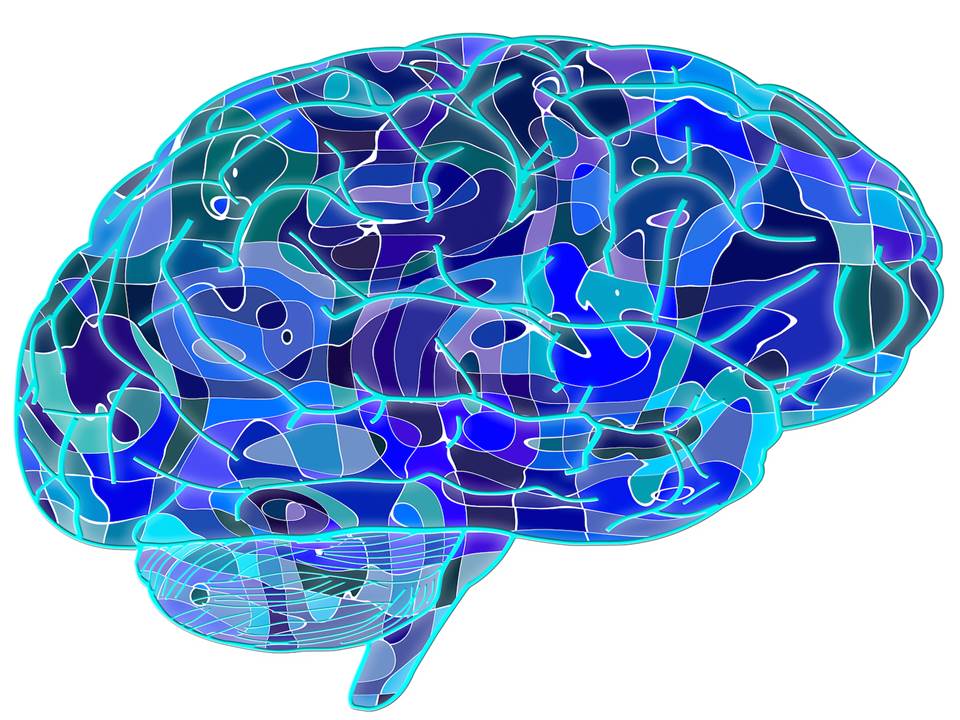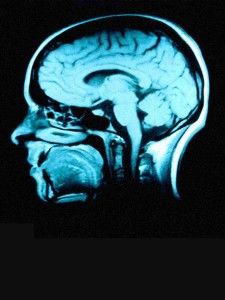The historical context in which Brain Computer Interfaces (BCI) has emerged has been addressed in a previous article called “To Interface the Future: Interacting More Intimately with Information” (Kraemer, 2011). This review addresses the methods that have formed current BCI knowledge, the directions in which it is heading and the emerging risks and benefits from it. Why neural stem cells can help establish better BCI integration is also addressed as is the overall mapping of where various cognitive activities occur and how a future BCI could potentially provide direct input to the brain instead of only receive and process information from it.
EEG Origins of Thought Pattern Recognition
Early BCI work to study cognition and memory involved implanting electrodes into rats’ hippocampus and recording its EEG patterns in very specific circumstances while exploring a track both when awake and sleeping (Foster & Wilson, 2006; Tran, 2012). Later some of these patterns are replayed by the rat in reverse chronological order indicating a retrieval of the memory both when awake and asleep (Foster & Wilson, 2006). Dr. John Chapin shows that the thoughts of movement can be written to a rat to then remotely control the rat (Birhard, 1999; Chapin, 2008).
A few human paraplegics have volunteered for somewhat similar electrode implants into their brains for an enhanced BrainGate2 hardware and software device to use as a primary data input device (UPI, 2012; Hochberg et al., 2012). Clinical trials of an implanted BCI are underway with BrainGate2 Neural Interface System (BrainGate, 2012; Tran, 2012). Currently, the integration of the electrodes into the brain or peripheral nervous system can be somewhat slow and incomplete (Grill et al., 2001). Nevertheless, research to optimize the electro-stimulation patterns and voltage levels in the electrodes, combining cell cultures and neurotrophic factors into the electrode and enhance “endogenous pattern generators” through rehabilitative exercises are likely to improve the integration closer to full functional restoration in prostheses (Grill et al., 2001) and improved functionality in other BCI as well.
When integrating neuro-chips to the peripheral nervous system for artificial limbs or even directly to the cerebral sensorimotor cortex as has been done for some military veterans, neural stem cells would likely help heal the damage to the site of the limb lost and speed up the rate at which the neuro-chip is integrated into the innervating tissue (Grill et al., 2001; Park, Teng, & Snyder, 2002). These neural stem cells are better known for their natural regenerative ability and it would also generate this benefit in re-establishing the effectiveness of the damaged original neural connections (Grill et al., 2001).
Neurochemistry and Neurotransmitters to be Mapped via Genomics
Cognition is electrochemical and thus the electrodes only tell part of the story. The chemicals are more clearly coded for by specific genes. Jaak Panksepp is breeding one line of rats that are particularly prone to joy and social interaction and another that tends towards sadness and a more solitary behavior (Tran, 2012). He asserts that emotions emerged from genetic causes (Panksepp, 1992; Tran, 2012) and plans to genome sequence members of both lines to then determine the genomic causes of or correlations between these core dispositions (Tran, 2012). Such causes are quite likely to apply to humans as similar or homologous genes in the human genome are likely to be present. Candidate chemicals like dopamine and serotonin may be confirmed genetically, new neurochemicals may be identified or both. It is a promising long-term study and large databases of human genomes accompanied by medical histories of each individual genome could result in similar discoveries. A private study of the medical and genomic records of the population of Iceland is underway and has in the last 1o years has made unique genetic diagnostic tests for increased risk of type 2 diabetes, breast cancer prostate cancer, glaucoma, high cholesterol/hypertension and atrial fibrillation and a personal genomic testing service for these genetic factors (deCODE, 2012; Weber, 2002). By breeding 2 lines of rats based on whether they display a joyful behavior or not, the lines of mice should likewise have uniquely different genetic markers in their respective populations (Tran, 2012).
fMRI and fNIRIS Studies to Map the Flow of Thoughts into a Connectome
Though EEG-based BCI have been effective in translating movement intentionality of the cerebral motor cortex for neuroprostheses or movement of a computer cursor or other directional or navigational device, it has not advanced the understanding of the underlying processes of other types or modes of cognition or experience (NPG, 2010; Wolpaw, 2010). The use of functional Magnetic Resonance Imaging (fMRI) machines, and functional Near-Infrared Spectroscopy (fNIRIS) and sometimes Positron Emission Tomography (PET) scans for literally deeper insights into the functioning of brain metabolism and thus neural activity has increased in order to determine the relationships or connections of regions of the brain now known collectively as the connectome (Wolpaw, 2010).
Dr. Read Montague explained broadly how his team had several fMRI centers around the world linked to each other across the Internet so that various economic games could be played and the regional specific brain activity of all the participant players of these games can be recorded in real time at each step of the game (Montague, 2012). In the publication on this fMRI experiment, it shows the interaction between baseline suspicion in the amygdala and the ongoing evaluation of the specific situation that may increase or degree that suspicion which occurred in the parahippocampal gyrus (Bhatt et al., 2012). Since the fMRI equipment is very large, immobile and expensive, it cannot be used in many situations (Solovey et al., 2012). To essentially substitute for the fMRI, the fNIRS was developed which can be worn on the head and is far more convenient than the traditional full body fMRI scanner that requires a sedentary or prone position to work (Solovey et al., 2012).
In a study of people multitasking on the computer with the fNIRIS head-mounted device called Brainput, the Brainput device worked with remotely controlled robots that would automatically modify the behavior of 2 remotely controlled robots when Brainput detected an information overload in the multitasking brains of the human navigating both of the robots simultaneously over several differently designed terrains (Solovey et al., 2012).
Writing Electromagnetic Information to the Brain?
These 2 examples of the Human Connectome Project lead by the National Institute of Health (NIH) in the US and also underway in other countries show how early the mapping of brain region interaction is for higher cognitive functions beyond sensory motor interactions. Nevertheless, one Canadian neurosurgeon has taken volunteers for an early example of writing some electromagnetic input into the human brain to induce paranormal kinds of subjective experience and has been doing so since 1987 (Cotton, 1996; Nickell, 2005; Persinger, 2012). Dr. Michael Persinger uses small electrical signals across the temporal lobes in an environment with partial audio-visual isolation to reduce neural distraction (Persinger, 2003). These microtesla magnetic fields especially when applied to the right hemisphere of the temporal lobes often induced a sense of an “other” presence generally described as supernatural in origin by the volunteers (Persinger, 2003). This early example shows how input can be received directly by the brain as well as recorded from it.
Higher Resolution Recording of Neural Data
Electrodes from EEGs and electromagnets from fMRI and fNIRIS still record or send data at the macro level of entire regions or areas of the brain. Work on intracellular recording such as the nanotube transistor allows for better understanding at the level of neurons (Gao et al., 2012). Of course, when introducing micro scale recording or transmitting equipment into the human brain, safety is a major issue. Some progress has been made in that an ingestible microchip called the Raisin has been made that can transmit information gathered during its voyage through the digestive system (Kessel, 2009). Dr. Robert Freitas has designed many nanoscale devices such as Respirocytes, Clottocytes and Microbivores to replace or augment red blood cells, platelets and phagocytes respectively that can in principle be fabricated and do appear to meet the miniaturization and propulsion requirements necessary to get into the bloodstream and arrive at the targeted system they are programmed to reach (Freitas, 1998; Freitas, 2000; Freitas, 2005; Freitas, 2006).
The primary obstacle is the tremendous gap between assembling at the microscopic level and the molecular level. Dr. Richard Feynman described the crux of this struggle to bridge the divide between atoms in his now famous talk given on December 29, 1959 called “There’s Plenty of Room at the Bottom” (Feynman, 1959). To encourage progress towards the ultimate goal of molecular manufacturing by enabling theoretical and experimental work, the Foresight Institute has awarded annual Feynman Prizes every year since 1997 for contribution in this field called nanotechnology (Foresight, 2012).
The Current State of the Art and Science of Brain Computer Interfaces
Many neuroscientists think that cellular or even atomic level resolution is probably necessary to understand and certainly to interface with the brain at the level of conceptual thought, memory storage and retrieval (Ptolemy, 2009; Koene, 2010) but at this early stage of the Human Connectome Project this evaluation is quite preliminary. The convergence of noninvasive brain scanning technology with implantable devices among volunteer patients supplemented with neural stem cells and neurotrophic factors to facilitate the melding of biological and artificial intelligence will allow for many medical benefits for paraplegics at first and later to others such as intelligence analysts, soldiers and civilians.
Some scientists and experts in Artificial Intelligence (AI) express the concern that AI software is on track to exceed human biological intelligence before the middle of the century such as Ben Goertzel, Ray Kurzweil, Kevin Warwick, Stephen Hawking, Nick Bostrom, Peter Diamandis, Dean Kamen and Hugo de Garis (Bostrom, 2009; de Garis, 2009, Ptolemy, 2009). The need for fully functioning BCIs that integrate the higher order conceptual thinking, memory recall and imagination into cybernetic environments gains ever more urgency if we consider the existential risk to the long-term survival of the human species or the eventual natural descendent of that species. This call for an intimate and fully integrated BCI then acts as a shield against the possible emergence of an AI independently of us as a life form and thus a possible rival and intellectually superior threat to the human heritage and dominance on this planet and its immediate solar system vicinity.
References
Bhatt MA, Lohrenz TM, Camerer CF, Montague PR. (2012). Distinct contributions of the amygdala and parahippocampal gyrus to suspicion in a repeated bargaining game. Proc. Nat’l Acad. Sci. USA, 109(22):8728–8733. Retrieved October 15, 2012, from http://www.ncbi.nlm.nih.gov/pmc/articles/PMC3365181/pdf/pnas.201200738.pdf.
Birhard, K. (1999). The science of haptics gets in touch with prosthetics. The Lancet, 354(9172), 52–52. Retrieved from http://search.proquest.com/docview/199023500
Bostrom, N. (2009). When Will Computers Be Smarter Than Us? Forbes Magazine. Retrieved October 19, 2012, from http://www.forbes.com/2009/06/18/superintelligence-humanity-oxford-opinions-contributors-artificial-intelligence-09-bostrom.html.
BrainGate. (2012). BrainGate — Clinical Trials. Retrieved October 15, 2012, from http://www.braingate2.org/clinicalTrials.asp.
Chapin, J. (2008). Robo Rat — The Brain/Machine Interface [Video]. Retrieved October 19, 2012, from https://www.youtube.com/watch?v=-EvOlJp5KIY.
Cotton, I. (1997, 96). Dr. persinger’s god machine. Free Inquiry, 17, 47–51. Retrieved from http://search.proquest.com/docview/230100330.
de Garis, H. (2009, June 22). The Coming Artilect War. Forbes Magazine. Retrieved October 19, 2012, from http://www.forbes.com/2009/06/18/cosmist–terran-cyborgist-opinions-contributors-artificial-intelligence-09-hugo-de-garis.html.
deCODE genetics. (2012). deCODE genetics – Products. Retrieved October 26, 2012, from http://www.decode.com/products.
Feynman, R. (1959, December 29). There’s Plenty of Room at the Bottom, An Invitation to Enter a New Field of Physics. Caltech Engineering and Science. 23(5)22–36. Retrieved October 17, 2012, from http://calteches.library.caltech.edu/47/2/1960Bottom.pdf.
Foresight Institute. (2012). FI sponsored prizes & awards. Retrieved October 17, 2012, from http://www.foresight.org/FI/fi_spons.html.
Foster, D. J., & Wilson, M. A. (2006). Reverse replay of behavioural sequences in hippocampal place cells during the awake state. Nature, 440(7084), 680–3. doi: 10.1038/nature04587.
Freitas, R. (1998). Exploratory Design in Medical Nanotechnology: A Mechanical Artificial Red Cell, Artificial Cells, Blood Substitutes, and Immobil. Biotech.26(1998):411–430. Retrieved October 15, 2012, from http://www.foresight.org/Nanomedicine/Respirocytes.html.
Freitas, R. (2000, June 30). Clottocytes: Artificial Mechanical Platelets,” Foresight Update (41)9–11. Retrieved October 15, 2012, from http://www.imm.org/publications/reports/rep018.
Freitas, R. (2005. April). Microbivores: Artificial Mechanical Phagocytes using Digest and Discharge Protocol. J. Evol. Technol. (14)55–106. Retrieved October 15, 2012, from http://www.jetpress.org/volume14/freitas.pdf.
Freitas, R. (2006. September). Pharmacytes: An Ideal Vehicle for Targeted Drug Delivery. J. Nanosci. Nanotechnol. (6)2769–2775. Retrieved October 15, 2012, from http://www.nanomedicine.com/Papers/JNNPharm06.pdf.
Gao, R., Strehle, S., Tian, B., Cohen-Karni, T. Xie, P., Duan, X., Qing, Q., & Lieber, C.M. (2012). “Outside looking in: Nanotube transistor intracellular sensors” Nano Letters. 12(3329−3333). Retrieved September 7, 2012, from http://cmliris.harvard.edu/assets/NanoLet12-3329_RGao.pdf.
Grill, W., McDonald, J., Peckham, P., Heetderks, W., Kocsis, J., & Weinrich, M. (2001). At the interface: convergence of neural regeneration and neural prostheses for restoration of function. Journal Of Rehabilitation Research & Development, 38(6), 633–639.
Hochberg, L. R., Bacher, D., Jarosiewicz, B., Masse, N. Y., Simeral, J. D., Vogel, J., Donoghue, J. P. (2012). Reach and grasp by people with tetraplegia using a neurally controlled robotic arm. Nature, 485(7398), 372–5. Retrieved from http://search.proquest.com/docview/1017604144.
Kessel, A. (2009, June 8). Proteus Ingestible Microchip Hits Clinical Trials. Retrieved October 15, 2012, from http://singularityhub.com/2009/06/08/proteus–ingestible-microchip-hits-clinical-trials.
Koene, R.A. (2010). Whole Brain Emulation: Issues of scope and resolution, and the need for new methods of in-vivo recording. Presented at the Third Conference on Artificial General Intelligence (AGI2010). March, 2010. Lugano, Switzerland. Retrieved August 29, 2010, from http://rak.minduploading.org/publications/publications/koene…=0&d=1.
Kraemer, W. (2011, December). To Interface the Future: Interacting More Intimately with Information. Journal of Geoethical Nanotechnology. 6(2). Retrieved December 27, 2011, from http://www.terasemjournals.com/GNJournal/GN0602/kraemer.html.
Montague, R. (2012, June). What we’re learning from 5,000 brains. Retrieved October 15, 2012, from http://video.ted.com/talk/podcast/2012G/None/ReadMontague_2012G-480p.mp4.
Nature Publishing Group (NPG). (2010, December). A critical look at connectomics. Nature Neuroscience. p. 1441. doi:10.1038/nn1210-1441.
Nickell, J. (2005, September). Mystical experiences: Magnetic fields or suggestibility? The Skeptical Inquirer, 29, 14–15. Retrieved from http://search.proquest.com/docview/219355830
Panksepp, J. (1992). A Critical Role for “Affective Neuroscience” in Resolving What Is Basic About Basic Emotions. 99(3)554–560. Retrieved October 14, 2012, from http://www.communicationcache.com/uploads/1/0/8/8/10887248/a…otions.pdf.
Park, K. I., Teng, Y. D., & Snyder, E. Y. (2002). The injured brain interacts reciprocally with neural stem cells supported by scaffolds to reconstitute lost tissue. Nature Biotechnology, 20(11), 1111–7. doi: 10.1038/nbt751.
Persinger, M. (2003). The Sensed Presence Within Experimental Settings: Implications for the Male and Female Concept of Self. Journal of Psychology. (137)1.5–16. Retrieved October October 14, 2012, from http://search.proquest.com/docview/213833884.
Persinger, M. (2012). Dr. Michael A. Persinger. Retrieved October 27, 2012, from http://142.51.14.12/Laurentian/Home/Departments/Behavioural+Neuroscience/People/Persinger.htm?Laurentian_Lang=en-CA
Ptolemy, R. (Producer & Director). (2009). Transcendent Man [Film]. Los Angeles: Ptolemaic Productions, Therapy Studios.
Solovey, E., Schermerhorn, P., Scheutz, M., Sassaroli, A., Fantini, S. & Jacob, R. (2012). Brainput: Enhancing Interactive Systems with Streaming fNIRS Brain Input. Retrieved August 5, 2012, from http://web.mit.edu/erinsol/www/papers/Solovey.CHI.2012.Final.pdf.
Tran, F. (Director). (2012). Dream Life of Rats [Video]. Retrieved ?September ?21, ?2012, from http://www.hulu.com/watch/388493.
UPI. (2012, May 31). People with paralysis control robotic arms to reach and grasp using brain computer interface. UPI Space Daily. Retrieved from http://search.proquest.com/docview/1018542919
Weber, J. L. (2002). The iceland map. Nature Genetics, 31(3), 225–6. doi: http://dx.doi.org/10.1038/ng920
Wolpaw, J. (2010, November). Brain-computer interface research comes of age: traditional assumptions meet emerging realities. Journal of Motor Behavior. 42(6)351–353. Retrieved September 10, 2012, from http://www.tandfonline.com/doi/pdf/10.1080/00222895.2010.526471.












